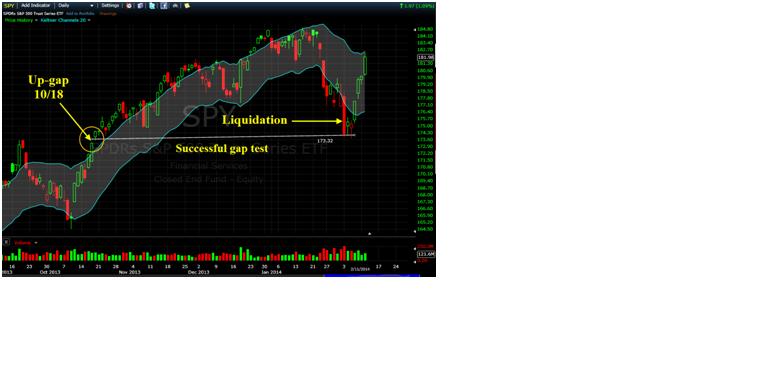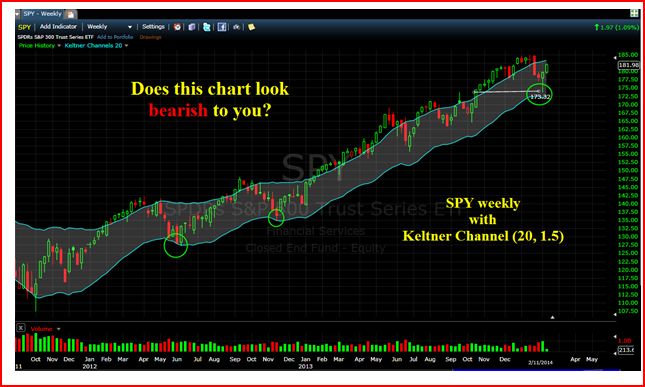Because market fluctuations affect one’s account value, corrections in an uptrend can cause us to become inappropriately bearish. This makes it more likely that we will sell into the weakness instead of buying. Before you liquidate a position, be sure you understand how difficult it is to make rational judgments during market corrections.
In his book Fooled by Randomness, Nassim Taleb points out that most of the inferences we make from observing market behavior have dubious value. Specifically, he points out that the more often we observe a portfolio, the more bearish our inferences become.
The reason is that losses (paper or otherwise) are at least twice as painful as wins are pleasurable, so random downward fluctuations in a portfolio are perceived as having more significance than they actually have.
THE SKY IS FALLING
This skewed perception is exacerbated during a deeper-than-normal correction because markets fall much faster than they rise. The downward momentum seems to “confirm” the implied bearishness.
Emotion is a non-linear experience, which means it has an exponential profile, like a wave or an avalanche. As fear feeds on itself, investors become highly motivated to liquidate holdings. A Liquidation Day occurred on February 3. Liquidations, however, create buyable bottoms.

This is a daily chart of the S&P 500 tracking stock (SPY). Note the up-gap on October 18, 2013. Because up-gaps represent irrational exuberance, markets almost always retrace to test them. This happened over the last few weeks. Such retracements are not bearish developments; they are a sign of good housekeeping.
GET SOME PERSPECTIVE
To help offset the tendency to make emotional decisions based on short-term downward price movement, step back to a higher timeframe. This is a weekly chart of the SPY with a 20 period Keltner channel. Note that for the last two years pullbacks to the lower Keltner band have been bought and this last correction was only the third occurrence of such a pullback in two years.

Professionals know they have to buy low to make money over the long term. In a bull market all dips will be bought and all of them will lead to new highs…except the last one. Until then, the trend is your friend.
= = =
Learn more about Dr. Reid’s day trading coaching services here.
Read his latest article in our quarterly trading publication here:




